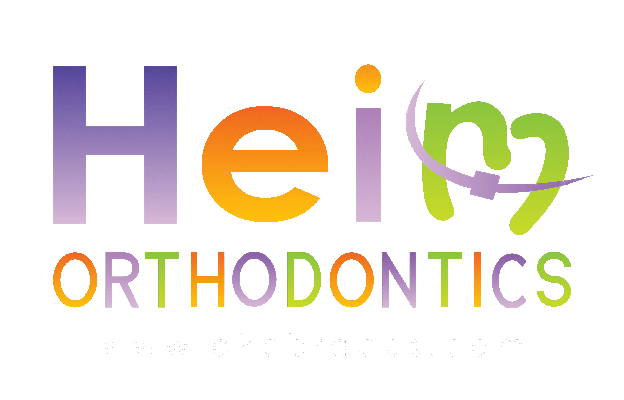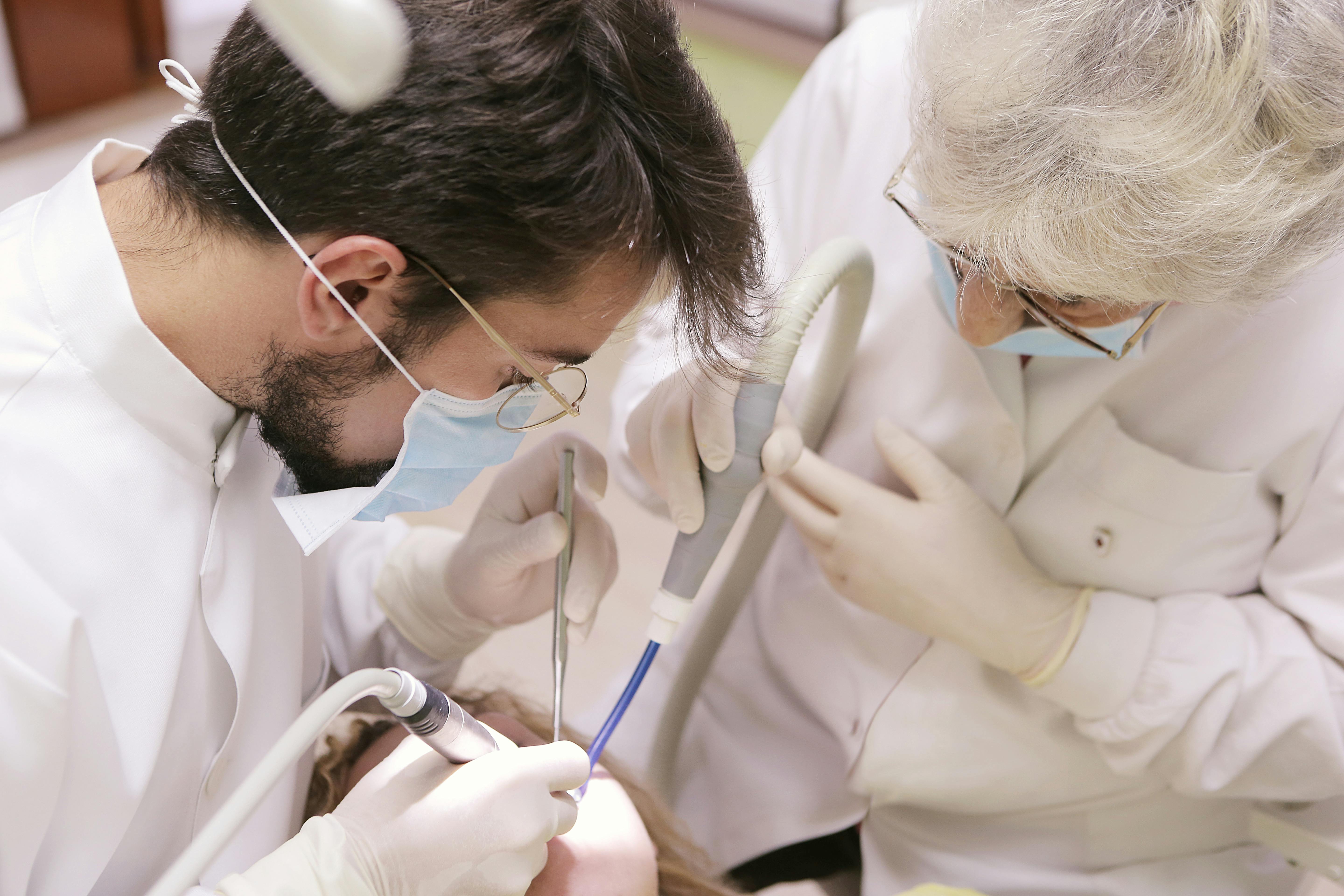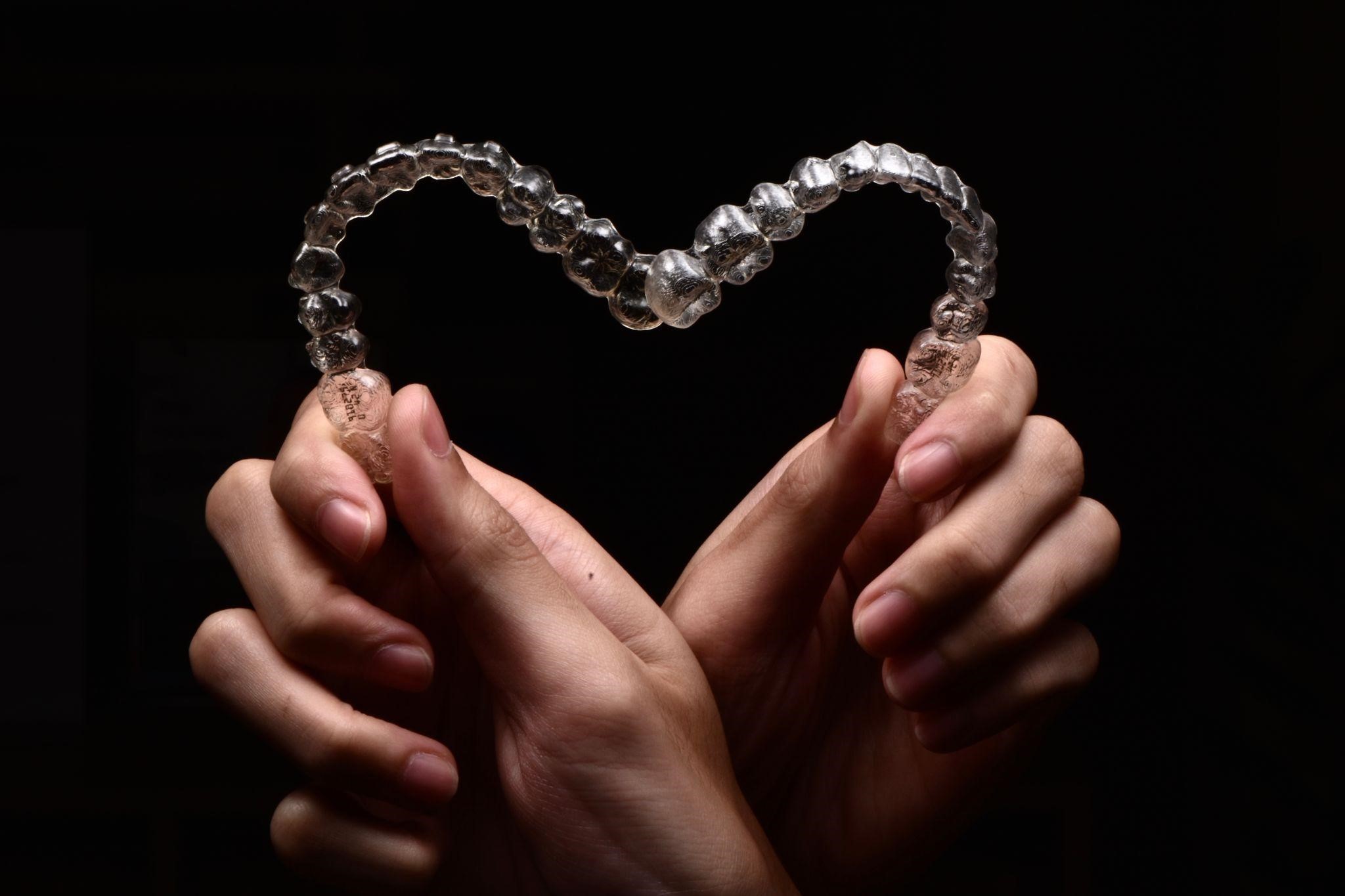Posted by Matt Heim 2023-11-19

Straightening your teeth and achieving a beautiful smile is no longer an unattainable dream. Thanks to orthodontic treatments, you can now enhance the alignment of your teeth and improve your overall oral health. But with so many options available, it's natural to have questions about these procedures. In this blog post, we'll answer some of the most commonly asked questions about orthodontic treatments, giving you all the information you need to make informed decisions about your dental care. So, let's dive in and explore everything you need to know!
What is Orthodontic Treatment?
Orthodontic treatment is a specialized branch of dentistry that focuses on correcting the alignment and positioning of teeth. It involves using various techniques and appliances to straighten crooked or crowded teeth, close gaps, and correct bite issues.
One common orthodontic treatment option is braces. These consist of metal brackets bonded to the teeth, connected by wires that apply gentle pressure to gradually move the teeth into proper alignment. Braces have come a long way in recent years, with more discreet options available, such as ceramic braces or even clear aligners like Invisalign.
The purpose of orthodontic treatment extends beyond just achieving a straighter smile. When your teeth are properly aligned, it becomes easier to maintain good oral hygiene habits since there are fewer nooks and crannies where bacteria can hide. This reduces the risk of tooth decay and gum disease in the long run.
Moreover, having aligned teeth can improve your overall dental health by alleviating issues such as jaw pain or difficulty chewing caused by misaligned bites. Orthodontic treatment can also enhance your facial aesthetics, boosting self-confidence and improving your overall quality of life.
To determine if you could benefit from orthodontic treatment, it's best to schedule an appointment with an orthodontist who will evaluate your specific needs and provide personalized recommendations tailored to you. They will take into account factors such as age, existing dental conditions, and desired outcomes when developing a comprehensive treatment plan.
Remember that each individual's case is unique; what works for someone else may not necessarily be right for you. That's why consulting with an experienced professional is crucial before embarking on any orthodontic journey.
When is the Right Time to Consider Orthodontic Treatment?
Orthodontic treatment involves correcting misaligned teeth and jaws to improve oral health and create a beautiful smile. But how do you know when it's the right time to consider orthodontic treatment for yourself or your child? While every individual case is unique, there are some common signs that indicate it may be time to consult with an orthodontist.
- One of the most obvious signs is crooked or crowded teeth. If your teeth overlap, are twisted, or have gaps between them, this can affect not only your appearance but also your ability to clean them properly. Misaligned teeth are harder to keep clean and can increase the risk of tooth decay and gum disease.
- Another sign that you may need orthodontic treatment is difficulty biting or chewing food. When your upper and lower jaw don't align correctly, it can make eating a challenge and put unnecessary strain on certain teeth.
- If you experience constant jaw pain or headaches, this could be an indication of a bite problem that would benefit from orthodontic intervention. A misaligned bite can lead to uneven pressure on your temporomandibular joint (TMJ), causing discomfort and even chronic pain.
- Additionally, if you're self-conscious about your smile due to noticeable dental irregularities like protruding front teeth or a visible overbite/underbite, seeking orthodontic treatment can help enhance both confidence and oral health.
To determine whether it's the right time for orthodontic treatment, schedule an evaluation with an experienced orthodontist who will thoroughly assess your needs using X-rays, photographs, and digital scans of your mouth. They will then recommend the most suitable course of action tailored specifically for you.
Remember: early detection of dental issues allows for better outcomes in many cases! So don't hesitate to seek professional advice if you suspect any problems with alignment or overall oral health – getting started sooner rather than later can make a significant difference in your treatment journey.
Types of Orthodontic Treatments
Orthodontic treatments come in various forms, each designed to address specific dental issues and cater to individual needs. Here are some of the common types of orthodontic treatments available:
- Traditional Metal Braces: These are the most commonly used type of braces. Made from high-grade stainless steel, they consist of metal brackets that are attached to each tooth and connected with archwires. Elastic bands may also be used to adjust the pressure on teeth.
- Ceramic Braces: Similar to traditional metal braces, ceramic braces use tooth-colored or clear brackets instead. This makes them less noticeable, making them a popular choice for individuals who want a more discreet treatment option.
- Lingual Braces: Unlike traditional braces that attach brackets on the front surface of teeth, lingual braces have brackets placed on the back side facing towards the tongue. This allows for a virtually invisible treatment option as they are hidden from view when smiling or talking.
- Invisalign Aligners: Invisalign is a popular alternative to traditional braces as it uses a series of clear aligners made from smooth plastic material that gradually moves teeth into proper alignment over time. They can be easily removed for eating or brushing, offering greater convenience.
- Retainers: After completing orthodontic treatment with braces or aligners, retainers play an essential role in maintaining the results achieved by holding teeth in their new positions.
Each type of orthodontic treatment has its own advantages and considerations depending on your unique dental condition and preferences.
The Process of Getting Braces or Invisalign
The process of getting braces or Invisalign involves several steps to help you achieve a straighter, more aligned smile. During your initial consultation, the orthodontist will assess your teeth and discuss your treatment options with you. They will take X-rays and photographs of your mouth to create a customized treatment plan that suits your specific needs.
Next, if you decide to proceed with braces or Invisalign, molds or digital scans of your teeth will be taken to create precise models for designing the appliances. For traditional braces, brackets will be bonded onto each tooth using a special adhesive. On the other hand, if you opt for Invisalign clear aligners, a series of custom-made trays will be created based on the digital scans.
Once the appliances are in place (brackets or aligners), regular adjustments and check-ups with the orthodontist are necessary throughout the course of treatment. This ensures that progress is monitored and any necessary adjustments can be made as needed.
For those wearing traditional braces, periodic tightening appointments may also be required to gradually shift the teeth into their desired positions. With Invisalign aligners, patients typically switch to new trays every few weeks as directed by their orthodontist.
It's important to note that maintaining good oral hygiene is essential while undergoing orthodontic treatment. Proper brushing and flossing techniques should be followed diligently since food particles can easily get trapped around brackets or aligners.
While both processes require some time and dedication from patients in terms of care and upkeep - whether it's braces or Invisalign - they offer effective solutions for achieving a beautiful smile!
Benefits of Orthodontic Treatment Beyond Straight Teeth
Orthodontic treatment offers more than just straight teeth. While achieving a beautiful smile is often the primary goal, there are numerous additional benefits that come along with orthodontic treatment.
- One key advantage of orthodontics is improved oral health. When teeth are properly aligned, it becomes easier to brush and floss effectively, reducing the risk of tooth decay and gum disease. Straight teeth also contribute to better overall dental hygiene, as plaque and bacteria have fewer places to hide.
- Properly aligned teeth can also lead to improved digestion. When you have crooked or misaligned teeth, chewing food can be challenging and may result in inadequate breakdown of food particles. This can put unnecessary strain on your digestive system and even increase the risk of gastrointestinal issues.
- In addition, orthodontic treatment can help enhance speech clarity. Misaligned jaws or crowded teeth may affect speech development by interfering with proper tongue placement and airflow through the mouth. By aligning the bite and correcting any crowding issues, orthodontics can improve articulation.
- Another often overlooked benefit is increased self-confidence. Having a straight smile not only improves your appearance but also boosts your self-esteem. You'll feel more comfortable smiling in social situations, taking photos, or speaking in public when you're proud of your smile.
Orthodontic treatment goes beyond aesthetics; it positively impacts oral health, digestion efficiency, speech clarity, and self-confidence – all contributing to an overall improved quality of life! So, if you're considering orthodontics for yourself or a loved one - remember that there's so much more than just straightening those pearly whites!
Conclusion
Orthodontic treatments are an effective way to improve not only the alignment of your teeth but also your overall oral health. Whether you choose traditional braces or Invisalign, these treatments can correct various dental issues and give you a confident smile.
If you have been wondering if orthodontic treatment is right for you, consider consulting with our orthodontist. They will assess your specific needs and recommend the most suitable option. Remember, it's never too late to achieve straighter teeth and a healthier bite.
With advancements in technology, orthodontic treatments have become more comfortable and discreet than ever before. So don't let concerns about appearance or discomfort hold you back from seeking treatment.
Investing in orthodontic treatment now can lead to a lifetime of improved oral health and confidence. Say goodbye to crooked teeth and hello to a straighter smile that you'll be proud to show off!
So why wait? Schedule a consultation with our orthodontist today and embark on your journey towards a beautiful, functional smile!
More Blog Posts
Visit Our Office
Office Hours
- MON - WED7:30 am - 5:00 pm
- THU8:30 am - 5:00 pm
- FRI8:00 am - 12:00 pm
- SAT - SUNClosed
Office Hours
- MON - THUClosed
- FRI9:00 am - 5:00 pm
- SAT - SUNClosed
4320 McAuley Blvd,
Oklahoma City, OK
Phone : (405) 755-8151Text Us : (405) 755-8151





